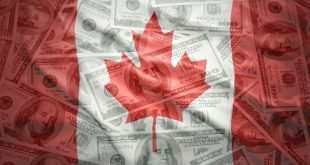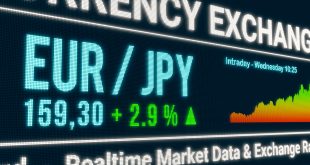Since the outburst of the war in East Europe, markets have massively increased their expectations for key US interest rates. This can be seen, among other things, in the rise in the yield on the 2-year US Treasury bond by around 0.9%% in just a few weeks.
The basis for this assumption is a persistently good economy, which has to be slowed down by strong interest rate hikes in order to get the inflationary pressure out of the economy.
However, there are also obvious doubts in the market about how much interest rates will ultimately have to be raised. Currently, after a strong rise, a decline in short-term interest rates is already priced in for the second half of 2023, albeit only to a small extent.
2023 is still a long way off, however. The upcoming economic data will be exciting. Interest rate expectations are currently fed by a very tight US labour market, which, along with high commodity costs and supply constraints, is fueling inflation.
Underlying the tight labour market, in turn, is a hesitant return of workers to the labour market, and, crucially, high aggregate demand. The question is how long these developments will continue and thus how hard the central bank will have to slam on the brakes. We assume that economic developments will do some of the work for the Fed in the course of 2022.
US households have been confronted with a negative development of their incomes in real terms since around the fall. Consumer spending is likely to have withstood this headwind in the first quarter, supported by the financial cushion built up during the pandemic.
This will continue to diminish over the coming months, as inflation rates are expected to remain above wage growth, which should ultimately weigh on consumption. Another aspect is the US housing market.
None of these factors will have an immediate effect. Thus, the US Fed will raise interest rates very quickly. We expect 50 basis points at the next two meetings in May and June and 25 basis points at each of the four meetings in the second half of the year.
As the year progresses, however, both US economic growth and inflation should slow. In contrast to the market, we therefore do not expect any further rate hikes in 2023.
The sharp decline in even long-term interest rates during the COVID-19 pandemic has massively improved the financial situation of homeowners. On one hand, this was due to strong increases in house prices, which were up to 20% y/y, and on the other hand to the possibility of refinancing existing loans and thus lowering monthly payments. However, this support is now likely to be over, as mortgage rates have now climbed back above pre-crisis levels.
Part of the inflationary pressure came from supply bottlenecks. In the case of vehicles, the March data showed an easing, and prices for used cars fell significantly from the previous month, but are still 35% above those seen the previous year. Thus, there is still room for the correction to continue.
Finally, the labour market. The number of job openings in the US is very high and the unemployment rate is already very low. However, there are indications of an easing. Average hourly wages have shown somewhat less momentum during the last two months than before, as growth rates compared with the respective previous months have declined somewhat.
Another factor pointing to an easing is the fact that employees have been increasingly returning to the labour market for months, as evidenced by a rise in the participation rate.

 Noor Trends News, Technical Analysis, Educational Tools and Recommendations
Noor Trends News, Technical Analysis, Educational Tools and Recommendations




